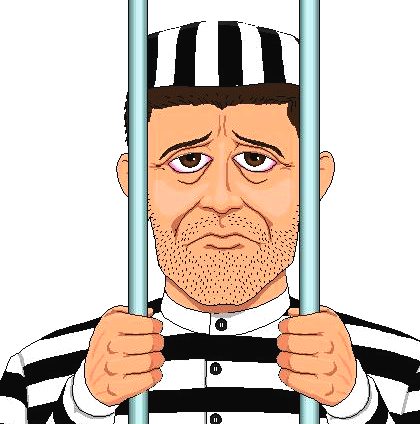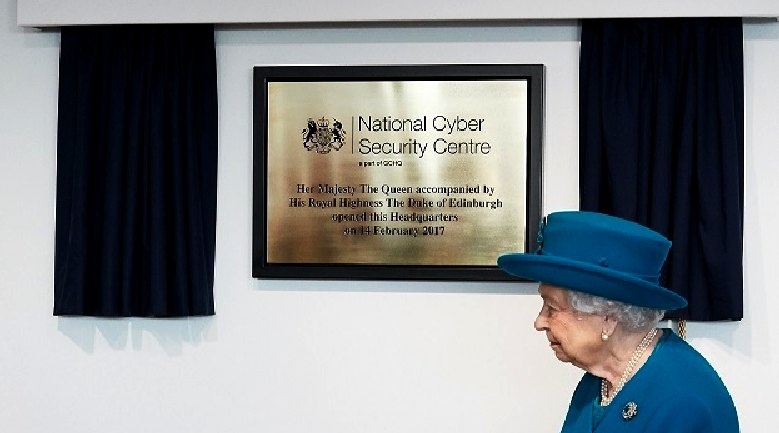|
CRIME & DISORDER ACT 1998
|
|
The Crime and Disorder Act 1998 IS an Act of the Parliament of the United Kingdom. Most of it only applies to England and Wales. Most notably is creates Antisocial Behaviour Orders.
ANTISOCIAL BEHAVIOUR ORDERS (ASBOS)
The Act introduced a civil remedy called the anti-social behaviour order (or ASBO). These orders are made against people who have engaged in anti-social behaviour which in the United Kingdom is defined as "conduct which caused or was likely to cause alarm, harassment, or distress to one or more persons not of the same household as him or herself and where an ASBO is seen as necessary to protect relevant persons from further anti-social acts by the Defendant".
In England and Wales, the orders are made by the Magistrates' courts and in Scotland by the Sheriff courts. The provisions of the 1998 Act have since been modified by the Anti-social Behaviour Act 2003.
The UK government have, for decades, tried to implement rules and actions that reduce crime on the streets and in neighbourhoods. Such crimes include noise disorders, neighbour disputes, intoxication fuelled disruptions, graffiti, vandalism and general behaviour that is considered to be anti-social.
Introduced in 1999, forming part of the Crime & Disorder Act 1998, Anti-social Behaviour Orders have become a prevalent measure in the pursuit to tackling such crimes. Most commonly referred to as ASBOs, this conviction places restrictions on the lifestyle and geographical movements of a convicted person.
The following guide gives information about ASBOs including: when they can be given, what is considered to be anti-social behaviour, the duration of an order and the consequences of an ASBO being breached.
-
Abuse to neighbours or passers-by
See
also: The Anti-Social Behaviour Act 2003 (c.38) is an Act of the Parliament of the United Kingdom which almost entirely applies only to England and Wales. The Act, championed by then Home Secretary, David Blunkett, was passed in 2003. As well as strengthening the anti-social behaviour order and Fixed Penalty Notice provisions, and banning spray paint sales to people under the age of 16, it gives local councils the power to order the removal of graffiti from private property.
It also specifically addresses truancy, crack houses, false reports of emergency, fireworks, public drunkenness and gang activity.
An ASBO can be given to anyone above the age of 10 who is deemed to have been acting in an anti-social way, and an order is considered to be necessary to prevent further such action and to protect society.
In instances of groups acting in an anti-social way, a case must be made against each individual and the limitations of the ASBO may vary for each person, but may include the directors of a limited company as a group, where none of the directors voted against such action.
2020 CRIMINAL DAMAGE - In the matter of Access to Neighbouring Land Act 1992, in late 2011, Peter and June Townley had installed, two fence bays to (effectively) block off access to an adjacent passage that had previously been enjoyed - and that both June and Peter Townley had promised that access would always be available. This was not a problem where other fencing had fallen down. But when such fencing was reinstated with access provided, Peter Townley or his executors (someone with enduring power of attorney) blocked off the access way. This was in 2019. Thus the occupiers of the Old Rectory entered a phase where they are in breach of a longstanding contract. They refused notices and did not reply to correspondence, seeking to resolve the situation amicably.
It is alleged that the controlling minds of the properties concerned then embarked on a campaign of disinformation, telling Wealden and Rother District Councils of wastewater and damp issues. Of these issues, having conducted drainage tests, it was shown that there was no wastewater issue. The allegation was untrue. As to damp, the gutters to the rear of the Old Rectory had fallen away, and they were now making it impossible for those seeking to effect repairs to the historic Generating Complex, to repair their guttering. Rainwater was thus cascading into the alley, the subject of complaint. But the problem appeared to be of the complainant's own making. As of April 2020, the guttering issues is still not resolved.
It is alleged that guttering serving the Generating Complex had been destroyed by brambles and ivy, that Peter and June Townley (deceased) had allowed to grow for many years untended - so becoming a statutory nuisance, or something similar.
On the ninth of April 2020, between 7:40 and a little after 8:00am, two CCTV cameras that had been installed to monitor criminal damage, denial of access, etc., such as the damaged party-fencing separating the gardens of the Generating Complex and Old Rectory, were violently torn down, without provocation.
This was obviously a premeditated attack, and could only have involved the directors of Lime Park, or the owners/occupiers of the Old Rectory. Unless, someone else operating in the Park was aware that his actions were criminal and was afraid of being captured on camera, such as to provide the evidence for a criminal prosecution.
It such circumstances it is lawful to aim CCTV cameras to record crime. It is not lawful to do so without cause, and images should be routinely destroyed, except for those lodge with the proper authorities in relation to any investigation. The proper authority in this case is Sussex police.
2019 CRIMINAL DAMAGE - On the morning of December 11 2019, one of the occupiers of the Generating Complex alleges that he heard a commotion to the rear of the property. This was about 7:40-7:50 am. On investigation, it was noted that fencing that was in good condition the evening before, had been ripped from the fencing posts. The Old Rectory was at the time unoccupied. On proceeding to the front of the property and into the drive serving Lime Park, a gray painted Citroen builder's van was noted parked in the Rectory courtyard. It was photographed as potential evidence for any forthcoming legal action.
LIME PARK SHARED DRIVE - The Old Rectory entrance looking from Lime Park immediately after hearing the commotion in the garden to the rear. There was nobody else around in Lime Park at this hour, except the driver of this vehicle. Soon after taking this picture, pictures of the damaged fencing were taken (including the one above). After the builder had driven away, the area was surveyed to be sure that nobody else was around, or could or would have had the opportunity to cause such damage. The matter was reported to Sussex police and is the subject of further investigation and high level communications as to law and justice. It is alleged that this roofer/builder worked for Peter & June Townley, then Peter Townley, until his passing in September 22 2019. As this picture was taken on December 11 2019. It is alleged that the roofer must then have been operating on instruction of the appointed Executor and Trustee, which according to the Will of Peter Gwyn Lanford Townley (dated 3 February 2018), is Alison Langford Deshayes. According to the Registry of Probates, Brighton District, a Grant of Probate was issued on January 7 2019 in an amount of £1,091,758 net, by the High Court of Justice, Family Division. You can validate the above by calling 0300 303 0648.
CIVIL FOLLOW UP - PUNISHMENTS FOR ANTISOCIAL BEHAVIOUR
You can get a civil injunction, Community Protection Notice (CPN) or Criminal Behaviour Order (CBO) as punishment for antisocial behaviour.
Civil injunctions, CPNs and CBOs replaced Antisocial Behaviour Orders (ASBOs) in England, Wales and Northern Ireland. ASBOs are still used in Scotland.
Antisocial behaviour includes:
-
drunken or threatening behaviour
A court may give you a civil injunction or a CPN if it gets reports of persistent antisocial behaviour from the police, a council or a landlord. You can only get a CBO if you’ve been convicted of a crime.
You can get a civil injunction or CBO if you’re 10 or over and a CPN if you’re 16 or over.
WHAT YOU MUST DO
You must follow certain rules or you could get a more severe punishment.
HOW LONG IT LASTS
The court will tell you how long you have to follow the rules. There’s no maximum amount of time a CPN can last. How long civil injunctions and CBOs can last depends on your age.
If you’re under 18:
-
a civil injunction can last for up to 12 months
There’s no maximum amount of time if you’re 18 or over. If you have a CBO it’ll be reviewed every year and either stopped or extended.
IF YOU DON'T FOLLOW THE RULES
The punishment for not following your civil injunction is:
-
a 3 month detention order if you’re under 18
The punishment for not following your CPN is a fine between £100 and £2,500.
The punishment for not following your CBO is:
-
up to 2 years in a detention centre if you’re under 18
CRIME AND DISORDER ACT 1998 - ORIGINAL AS ENACTED
Section 1 - Anti-social behaviour orders
(1)
An application for an order under this section may be made by a relevant authority if it appears to the authority that the following conditions are fulfilled with respect to any person aged 10 or over,
namely — a) that the person has acted, since the commencement date, in an anti-social manner, that is to say, in a manner that caused or was likely to cause harassment, alarm or distress to one or more persons not of the same household as himself; and
(b)
that such an order is necessary to protect persons in the local government area in which the harassment, alarm or distress was caused or was likely to be caused from further anti-social acts by him;
(2) A relevant authority shall not make such an application without consulting each other relevant authority.
(3) Such an application shall be made by complaint to the magistrates' court whose commission area includes the place where it is alleged that the harassment, alarm or distress was caused or was likely to be caused.
(4) If, on such an application, it is proved that the conditions mentioned in subsection (1) above are fulfilled, the magistrates' court may make an order under this section (an “anti-social behaviour order”) which prohibits the defendant from doing anything described in the order.
(5) For the purpose of determining whether the condition mentioned in subsection (1)(a) above is fulfilled, the court shall disregard any act of the defendant which he shows was reasonable in the circumstances.
(6) The prohibitions that may be imposed by an anti-social behaviour order are those necessary for the purpose of protecting from further anti-social acts by the defendant —
(a) persons in the local government area; and
(b)
persons in any adjoining local government area specified in the application for the order;
(7) An anti-social behaviour order shall have effect for a period (not less than two years) specified in the order or until further order.
(8) Subject to subsection (9) below, the applicant or the defendant may apply by complaint to the court which made an anti-social behaviour order for it to be varied or discharged by a further order.
(9) Except with the consent of both parties, no anti-social behaviour order shall be discharged before the end of the period of two years beginning with the date of service of the order.
(10) If without reasonable excuse a person does anything which he is prohibited from doing by an anti-social behaviour order, he shall be liable —
(a) on summary conviction, to imprisonment for a term not exceeding six months or to a fine not exceeding the statutory maximum, or to both; or
(b) on conviction on indictment, to imprisonment for a term not exceeding five years or to a fine, or to both.
(11) Where a person is convicted of an offence under subsection (10) above, it shall not be open to the court by or before which he is so convicted to make an order under subsection (1)(b) (conditional discharge) of section 1A of the [1973 c. 62.] Powers of Criminal Courts Act 1973 (“the 1973 Act”) in respect of the offence.
(12) In this section —
“the commencement date” means the date of the commencement of this section;
“local government area” means —
(a) in relation to England, a district or London borough, the City of London, the Isle of Wight and the Isles of Scilly;
(b) in relation to Wales, a county or county borough.
CHANGES
Whole provisions yet to be inserted into this Act (including any effects on those provisions):
OTHER OFFENCES
Sex Offender Orders
In England and Wales, a Sex Offender Order is a similar concept to the Anti-Social Behaviour Order with the key difference being that it is specifically aimed at those people in society that are deemed "sex offenders". The Act allows a police officer to approach the Magistrates' Court and show that he has reasonable cause to believe that there is a need for an order to be made to protect the public from harm. The conditions placed in such an order are those that are needed to prevent harm to the public. The order can be made for a minimum of 5 years unless the court upholds a complaint for the order to varied or discharged.
A breach of a Sex Offender Order renders the person to which the order applies, liable for imprisonment, on summary conviction, for up to six months or on conviction on indictment, up to five years and/or a fine.
The act only applies to those people that are defined as a 'sex offender' per Section 3(1) of the act or namely that the person has been convicted of an offence under Part I of the Sex Offenders Act 1997, was found not guilty as a result of insanity, or has been cautioned for such an offence and at the time admitted it or has been convicted of a similar offence in any country outside of the United Kingdom and the offence would have been deemed a sexual offence under UK law.
Parenting Orders
There are restrictions on orders being made that interfere with the parents' or child's religious beliefs or that interfere with the times which the parent normally attends work or an educational institution. If the parenting order is breached, the parent(s) could be liable to a fine, not exceeding level 3 on the standard scale.
NCSC ROYAL OPENING - Her Majesty The Queen opened the NCSC on the 17th of February 2017. There are several agencies in the UK that are supposed to tackle fraud, cyber crime, drugs, sex trafficking and money laundering, but when you ask any one of them to take a look at corruption in Wealden-land, they don't appear too anxious to open a case file. It's more a case of pass the buck .... and keep passing it ... until the complainant fades away. Sorry to have to report this to you Your Majesty, but it is the truth the whole truth and nothing but the truth - so help me God.
SUSSEX POLICE A - Z OF OFFICER INVESTIGATIONS
Don't report crime to Wealden, Vicarage Lane, Hailsham, East Sussex, BN27 2AX T: 01323 443322. They refused to protect a local farmer from harassment, even though it was their duty.
https://en.wikipedia.org/wiki/Anti-social_Behaviour_Act_2003 http://www.legislation.gov.uk/ukpga/2003/38/section/66 http://www.legislation.gov.uk/ukpga/2003/38/contents http://www.legislation.gov.uk/ukpga/1998/37/contents https://www.gov.uk/report-crime-anti-social-behaviour https://www.gov.uk/civil-injunctions-criminal-behaviour-orders
|
FAIR USE NOTICE
This site contains copyrighted material the use of which has not always been specifically authorized by the copyright owner. We are making such material available in our efforts to advance understanding of environmental, political, human rights, economic, scientific, and social justice issues, etc. We believe this constitutes a 'fair use' of any such copyrighted material as provided for in section 107 of the US Copyright Law. In accordance with Title 17 U.S.C. Section 107, the material on this site is distributed without profit to those who have expressed a prior interest in receiving the included information for research and educational purposes. |
|
This site is protected under Article10 of the European Convention on Human Rights and Fundamental Freedoms. |









